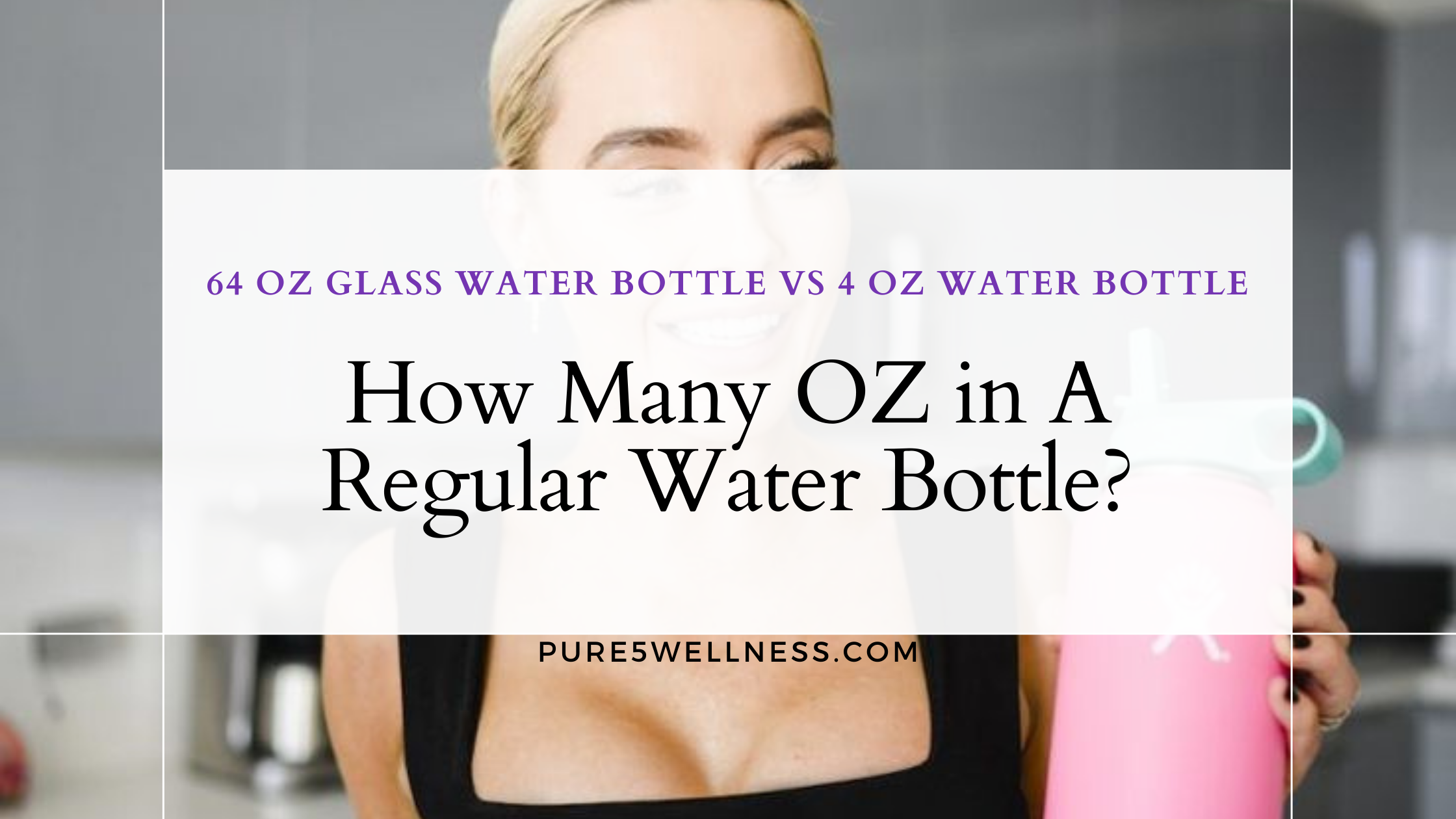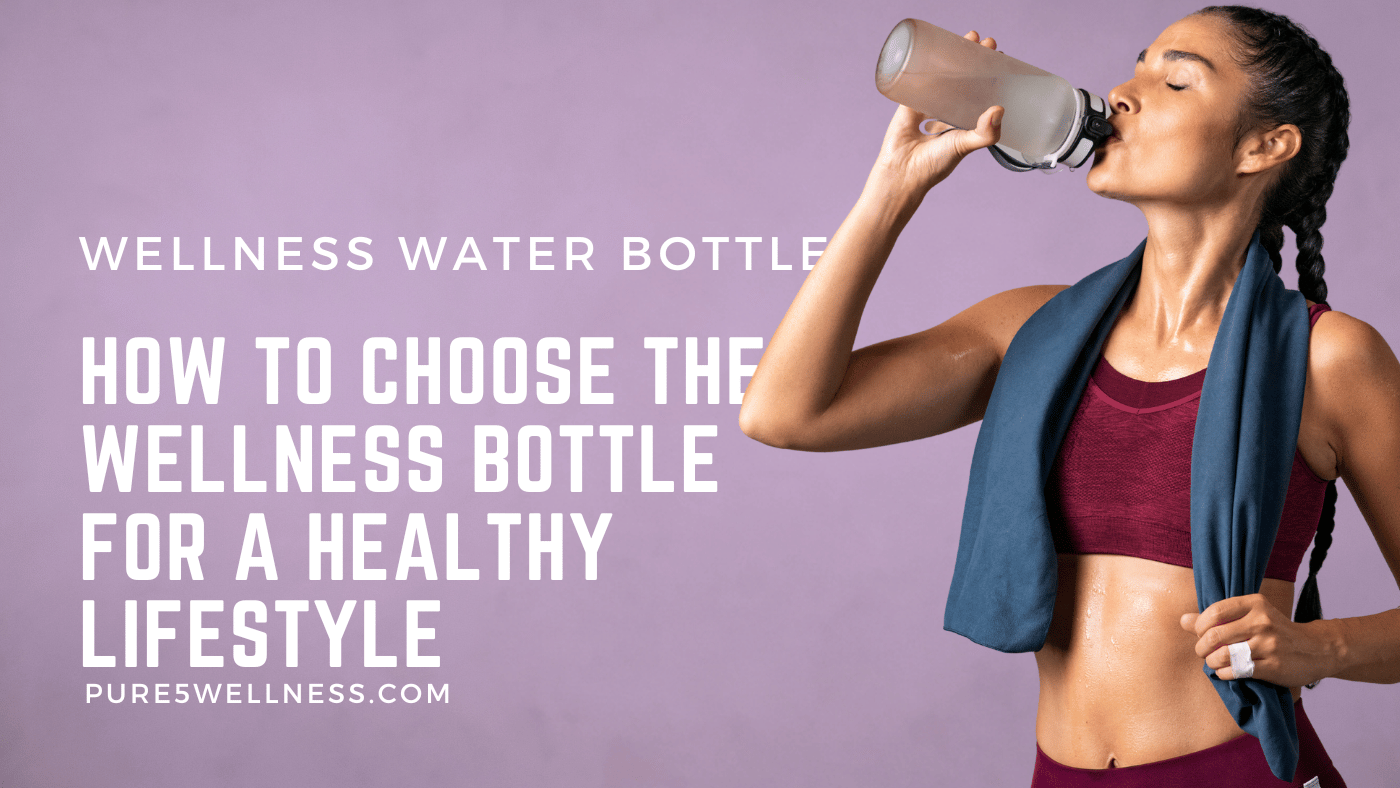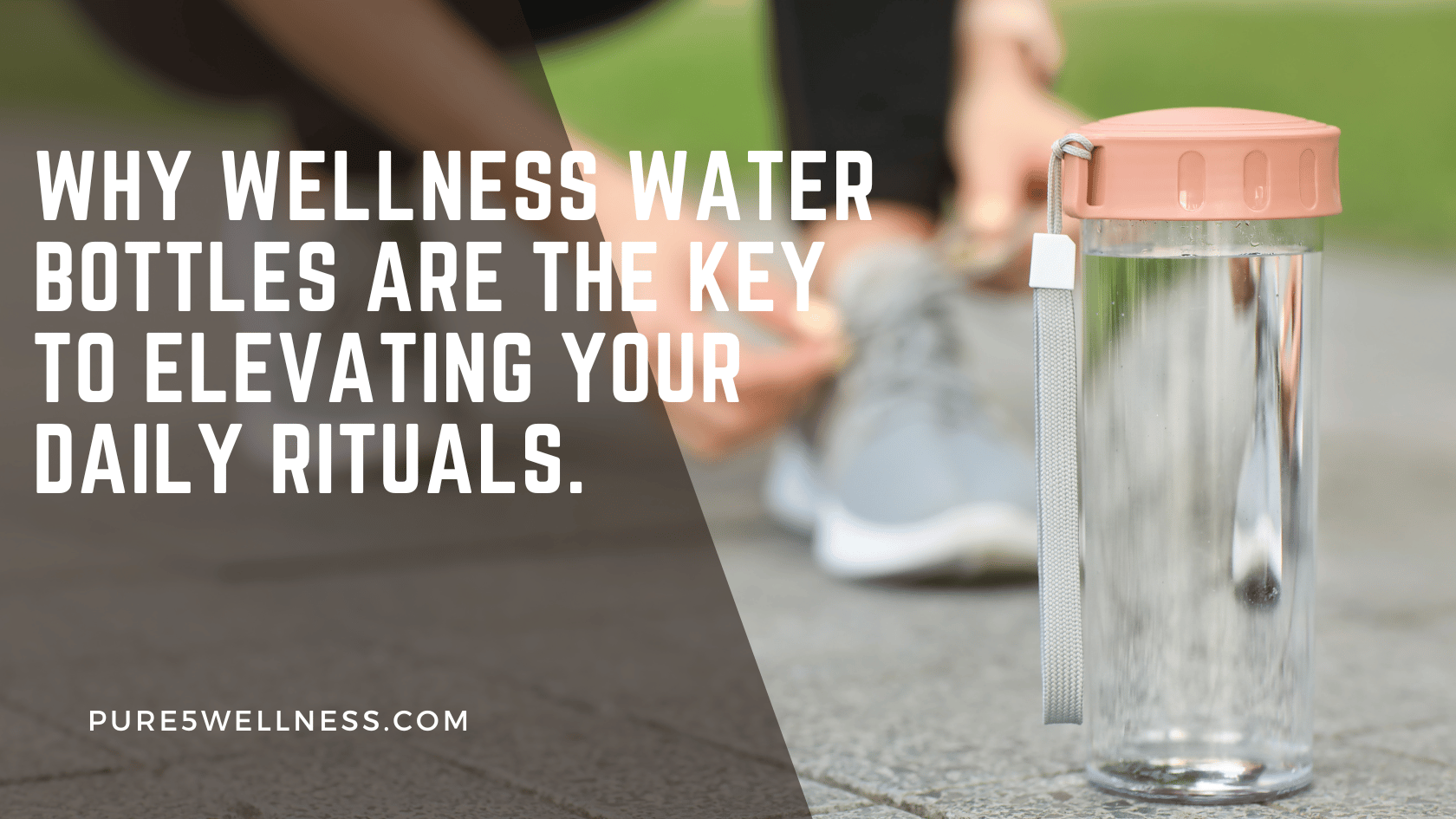When it comes to staying hydrated, one common question is: How many ounces are in a regular water bottle? This article explores the intricacies of water bottle sizes, the impact of different materials, the influence of bottle design on volume, and provides practical tips for maintaining hydration. Understanding these factors can help you make informed choices about your water consumption and the types of bottles you use.
Key Takeaways
- The standard water bottle typically holds 16.9 ounces (500 milliliters), but sizes can vary widely.
- Material choices like plastic, glass, or metal can affect the capacity and durability of water bottles.
- Bottle design, including shape and cap type, can influence the total volume of water a bottle can hold.
- For proper hydration, it’s recommended to drink around 64 ounces of water per day, which equates to approximately four standard water bottles.
- Choosing the right water bottle for personal needs should consider volume, material, design, and reusability to ensure adequate daily water intake.
Understanding Water Bottle Sizes

The Standard Water Bottle
When I think about a regular water bottle, the first thing that comes to mind is the standard 16.9-ounce size. It’s the one you’ll find most often in vending machines and grocery store coolers. It’s the go-to for a quick hydration fix and is conveniently sized for easy transport.
But even within this ‘standard’ category, there’s a bit of variation. For instance, some brands might offer bottles that are slightly larger or smaller, but they usually hover around the 16 to 17-ounce mark. Here’s a quick breakdown of what you might see on the shelves:
- 16.0 oz – Common in many value brands
- 16.9 oz (500 ml) – The typical size for many popular brands
- 17.2 oz – Occasionally seen in premium or imported waters
In my experience, sticking to the standard size makes it easier to keep track of how much water I’m drinking throughout the day. It’s a handy reference point, especially when I’m aiming for those eight glasses a day.
Variations in Bottle Sizes
In my time, I’ve seen water bottles in all shapes and sizes. It’s fascinating how they can range from small, portable ones that fit in your purse to large gallon jugs that you’d store in your car’s trunk for a road trip. The most common sizes you’ll find, though, are the 16.9 oz (500 ml) bottles, which are pretty standard for personal use.
But let’s not forget about the variety that comes into play. Some bottles are designed to hold 8, 12, or even 24 ounces of water. Here’s a quick rundown of the typical sizes I’ve come across:
- 8 oz (small, often for quick refreshment)
- 12 oz (a good size for kids or short workouts)
- 16.9 oz (the standard size for most adults)
- 24 oz (larger, for those who don’t want to refill as often)
- 32 oz (for the serious hydrators or long excursions)
It’s important to note that these sizes are not set in stone. Depending on the brand and the purpose of the bottle, you might find some unique volumes out there.
When you’re out shopping for a water bottle, keep in mind that the size will affect how often you need to refill it throughout the day. If you’re someone who’s always on the go, a larger bottle might be more convenient. On the other hand, if you’re looking to keep weight down or need something compact, a smaller bottle could be the way to go.
Measuring Fluid Ounces
When I first started paying attention to how much water I was drinking, I quickly realized that knowing how many oz in a regular water bottle was key. It’s not just about quenching thirst; it’s about tracking your daily intake. For instance, a 12 oz water bottle is perfect for a quick gym session, while a 64 oz glass water bottle is my go-to for all-day hydration.
Understanding the volume of your water bottle is crucial. Whether you’re using a 30 oz water bottle for a hike or a 32 oz metal water bottle for your office desk, knowing the ounces can help you meet your hydration goals. And let’s not forget about those days when you’re aiming high with a 100 oz water bottle – that’s when you really feel like you’re on top of your water game.
Here’s a quick reference I put together:
- 12 oz water bottle: short workouts
- 30 oz water bottle: hiking trips
- 32 oz metal water bottle: daily work routine
- 64 oz glass water bottle: all-day hydration
- 100 oz water bottle: meeting high hydration goals
The thing is, once you get the hang of it, measuring and refilling becomes second nature. And while the fluid ounce might seem like a small unit, it’s the standard that helps us stay on track with our water intake. According to Wikipedia, a volume of pure water measuring one imperial fluid ounce has a mass of almost exactly one ounce, which is pretty neat when you think about it.
My Top 7 Water Bottles Between 12oz and 64oz
- Owala FreeSip Insulated Stainless Steel Water Bottle with Straw.
- Titanium Ultralight 1.2 Litre/42.2 fl oz Leakproof Outdoor Camping Hiking Sports Water Bottle.
- CamelBak Chute Mag BPA Free Water Bottle with Tritan Renew + Magnetic Cap.
- Nalgene Sustain Tritan BPA-Free Water Bottle Made with Material Derived from 50% Plastic Waste, 32 OZ.
- Ultra-Filtration Portable Filter Water Bottle.
- Lightweight Self-Cleaning and Non-Insulated Stainless Steel Water Bottle with UV Water Purifier.
- HQAYW Stainless Steel Sports Thermos Water Bottles 40oz.
Navigating Through Different Materials

Plastic Versus Glass and Metal
I’ve tried all sorts of water bottles over the years, and I’ve noticed that the material really does make a difference. Plastic bottles are lightweight and durable, which is great for on-the-go hydration. But when it comes to keeping things clean, I’ve learned that stainless steel and glass options are just better. They don’t hold onto flavors or smells the way plastic can.
According to Gerhardt, stainless steel and glass bottles are better than plastic when it comes to hygiene.
Here’s a quick rundown of my experience with each material:
- Plastic: Easy to carry, but can get smelly over time.
- Glass: Pure taste, but heavier and more fragile.
- Metal: Durable and maintains temperature, but can be heavier than plastic.
I make sure to clean my water bottle after every use, no matter the material. It’s a simple step that keeps my water tasting fresh and helps me avoid any hygiene issues.
Impact of Material on Capacity
I’ve noticed that the material of a water bottle can really influence how much water it holds. Plastic bottles tend to be more flexible, and sometimes they can actually expand a bit when you fill them up, giving you a smidge more water. But with glass or metal, what you see is pretty much what you get. The rigidity of these materials means there’s no give, so the capacity is fixed.
When I switched from my old plastic bottle to a stainless steel one, I was surprised by the difference in weight and how it felt in my hand. The metal bottle felt sturdier, but it didn’t hold as much as I thought it would. That’s because the walls of the metal bottle were thicker, taking up space that could have been used for water. Here’s a quick rundown of how these materials stack up:
- Plastic: Lightweight, slightly expandable, varying capacity
- Glass: Heavier, non-expandable, consistent capacity
- Metal: Durable, non-expandable, capacity reduced by thicker walls
In my experience, choosing a bottle isn’t just about looks or keeping your water cold; it’s also about understanding how the material affects how much water you can carry. And when you’re trying to stay hydrated on a long hike or during a busy day, every ounce counts.
How Reusability Affects Volume Measurements
I’ve noticed that when I switched from disposable plastic bottles to reusable ones, my perception of how much water I was drinking changed. Reusable bottles often have volume markers, which are super handy for keeping track of my intake. But here’s the thing: not all reusable bottles are created equal.
Some of my insulated metal bottles seem to hold less water than they claim, probably because the insulation takes up some space. It’s a trade-off I’m willing to make for cold water during my long bike rides. Speaking of which, I’ve learned to invest in insulated metal water bottles for those rides. They keep my water cold and are durable enough to handle the bumps and knocks along the way.
When choosing a reusable bottle, consider not just the volume it holds, but also how the design and material might affect that volume. For example, a bottle with a thick insulating layer might hold less water than a non-insulated bottle of the same size.
Here’s a quick checklist I use when picking out a new bottle:
- Size and capacity
- Material (plastic, glass, or metal)
- Type of lid (screw top, flip top, etc.)
- Insulation quality
- Aesthetics and design
The Influence of Bottle Design

Shape and Usability
When I picked my first wellness water bottle, I didn’t think much about the shape or how it would fit into my daily routine. But let me tell you, it makes a huge difference. The right shape can encourage you to drink more water throughout the day.
For instance, bottles with a slim profile slide easily into my bag, while those with a wider base tend to sit more securely on my desk. And when I’m on the go, a bottle with a built-in loop or carabiner is a lifesaver for attaching to my backpack.
The usability of a water bottle goes beyond just its shape. Features like a one-handed opening mechanism or a spill-proof lid contribute significantly to a hassle-free hydration experience.
Here’s a quick rundown of the features I consider when choosing a bottle for its shape and usability:
- Leakproof design
- Easy-to-clean surfaces
- Comfortable drinking spout
- Non-slip grip
Smart technology, like hydration trackers and filtration systems, are becoming more common and can be a game-changer for staying healthy and hydrated.
The Role of the Cap in Volume
When I first started paying attention to my hydration, I didn’t think the cap of a water bottle would make much of a difference. But, as it turns out, the cap can actually affect how much water a bottle holds. Some bottles come with bulky caps that take up more space, which means they reduce the overall volume available for water.
The cap’s design can also lead to spillage or evaporation, which might seem negligible, but over time, it adds up. I’ve had bottles where the cap wasn’t sealing properly, and I’d find my bag damp after a jog. Not fun.
Caps with built-in straws or filters can be super handy for on-the-go hydration, but they also take up room. Here’s a quick rundown of how different cap types can impact volume:
- Standard screw caps: Minimal impact on volume
- Sports caps with spouts: Moderate impact due to mechanisms
- Caps with built-in filters/straws: Significant impact on volume
In my experience, choosing a water bottle with a cap that suits your needs is crucial. A leaky or bulky cap can be more trouble than it’s worth, especially if you’re counting on every ounce for your hydration goals.
Design Features That Affect Content Measurement
When I first started paying attention to my hydration, I didn’t realize how much the design of a water bottle could influence how much I drank. Take the insulation feature, for example. It’s great for keeping water cold, but it can also make the bottle bulkier, reducing the amount of liquid it can hold without looking bigger.
Bottle designs with built-in straws or infusers can be deceptive too. You might think you’re drinking a full bottle’s worth, but the space taken up by these features means you’re getting less water than you’d expect. Here’s a quick rundown of how different design elements can affect volume:
- Infuser baskets reduce volume
- Insulation layers take up space
- Straws and sip mechanisms displace water
I’ve learned to look beyond the aesthetics to understand the true capacity of my water bottles. It’s not just about the looks; it’s about functionality and how it aligns with my hydration goals. Wellness water bottles, for instance, are a game changer. They not only enhance hydration but also promote healthy habits and elevate daily rituals. And while features like filtration systems are fantastic for water quality, they can sometimes reduce the amount of water the bottle can actually carry.
Practical Tips for Hydration

How Much Water Should You Drink Daily?
I’ve always heard that we should aim to drink eight 8-ounce glasses of water a day, which is about half a gallon or 2 liters. But honestly, I’ve found that how much water I need can vary quite a bit. It depends on my activity level, the climate I’m in, and my overall health. For instance, on days when I hit the gym or go for a long run, I’ll drink an extra 8 ounces of water for every 30 minutes of exercise. And if it’s a scorcher out there, I’ll up my intake even more to stay hydrated.
Hydration is key, and it’s not just about quenching thirst—it’s about keeping your body functioning properly. I’ve learned to listen to my body’s signals and adjust my water consumption accordingly. Here’s a simple breakdown of how I adjust my water intake:
- Exercise: Add 8 ounces for every 30 minutes of activity.
- Hot Weather: Increase intake to prevent dehydration.
- Health Conditions: Consult with a doctor for personalized advice.
It’s not a one-size-fits-all situation. Your body’s water needs can change from day to day. Paying attention to how you feel and what you’re doing is the best way to gauge how much water you should be drinking.
Using Your Water Bottle to Track Intake
I’ve found that keeping track of how much water I drink can be a game-changer for staying hydrated. Using a water bottle with marked measurements makes it easy to see how much I’m drinking throughout the day. I aim to refill my bottle a certain number of times, which helps me meet my daily water goals.
To make it even simpler, I sometimes jot down the times I finish a bottle on a sticky note. This way, I can ensure I’m evenly spacing out my hydration and not just chugging a day’s worth of water all at once. Here’s a quick breakdown of how I track my intake:
- Morning: Finish first bottle by 10 AM
- Midday: Second bottle down by 1 PM
- Afternoon: Third bottle by 4 PM
- Evening: Fourth and final bottle by 7 PM
By setting these personal checkpoints, I create a routine that keeps my water intake consistent. It’s a small step that has a big impact on how I feel throughout the day.
Remember, the key isn’t just to drink water, but to spread it out in intervals that keep you consistently hydrated. It’s not about guzzling; it’s about maintaining a steady flow. And honestly, since I’ve started doing this, I’ve noticed I have more energy and my skin looks better. It’s the kind of habit that pays off in more ways than one.
Choosing the Right Bottle for Your Needs
After trying out a plethora of bottles, I’ve realized that picking the right one is crucial for staying hydrated throughout the day. Your lifestyle dictates the type of bottle you should carry. For instance, if you’re always on the go, a durable plastic water bottle like the Thermos Hydration Bottle might be your best bet. It’s lightweight and can take a beating, which is perfect for daily commutes.
On the other hand, if you’re like me and prefer something that keeps your water cold for hours, a metal bottle like the Mira Cascade is a game-changer. It’s not just about the material, though; the design plays a big role too. A tapered bottle can be easier to hold during a jog or workout.
When considering a new water bottle, think about where you’ll use it most and what features matter to you. Will it fit in your car’s cup holder? Is it easy to clean? These little details can make a big difference.
Here’s a quick rundown of what to look for:
- Capacity: How much water do you need to carry?
- Material: Plastic, glass, or metal?
- Insulation: Do you need your drink to stay hot or cold?
- Design: Consider the shape and the cap for ease of use.
Choosing the right water bottle is a personal journey. It’s about finding that perfect balance between practicality and personal preference. Trust me, once you find ‘the one’, it’ll be your constant companion.



